Search for articles, topics or more
browse by topics

Search for articles, topics or more

The photographer Jeff Burton is known for the cinematic quality of his work: bathers by a hotel pool become a study in saturated colour; tanned bodies are seen at one remove, distorted by mirrored surfaces; a woman’s glance is glimpsed through a car’s rearview mirror. The ordinary and extraordinary alike appears heightened and strange.
Burton's photographs have been exhibited internationally, in institutions ranging from the Guggenheim Museum in Bilbao to the Barbican Centre in London. For his latest project, the LA-based photographer trained his lens on the Molteni&C headquarters in Giussano, Italy. The result is a photobook created in honour of the 90th anniversary of the family-run company, featuring candid portraits of designers, craftspeople and members of the design dynasty.
What first drew you to photographing Molteni&C?
Aside from the brand’s notable historical design heritage and its long-time collaborations working with artists, I understood that Molteni&C was going to do something different with this book and I’m happy to say that I think we did.
I was introduced to the book project by Beda Achermann, who is a creative director, friend and adventurous fellow collaborator. He explained to me that the Moltenis were also adventurous, open to tell their story, and he felt that we would all get on.
Why did you decide to approach the photoshoot as if you were making a documentary film?
The idea of framing the shoot in the style of a movie was initiated by Studio Achermann. It came about organically, stemming from conversations I had with Beda about how many different hats I would need to wear to capture so many different kinds of images and stories in a very short time. I would be a photojournalist, a portrait photographer, still life photographer etc. Beda approached me because he saw me as the right artist with the right photographic spirit for this project.
A documentary film approach was the right spirit, for many reasons, with which to describe the Molteni world. I knew – we all knew – we didn’t want a book entirely made up of sterile imagery, which is a look often associated with the photographed documentation around design. This story was larger and human too.
The documentary approach freed me from directing “the scene”, so that I could concentrate fully, even meditatively, on being a photographer making images – a cinematographer as much as, if not more than, a director. I didn’t want directed scenes.
The shooting experience was paced like a documentary film unfolding in real time and I approached the image-making very freely. Honestly, I had to by necessity. There wasn’t much time to overthink.
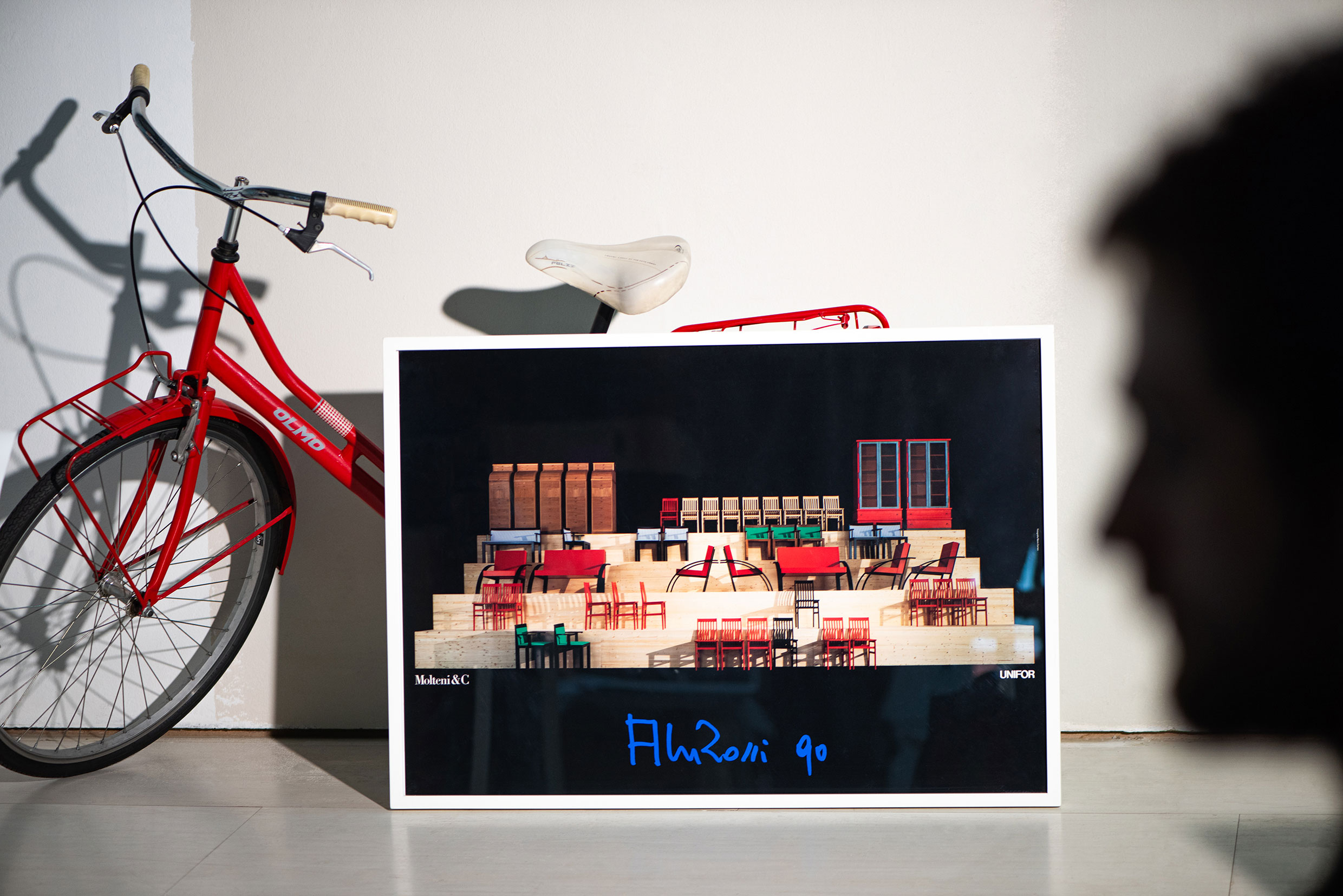
While some photos appear staged, others look so candid they could plausibly have been snapped by a paparazzo. How spontaneous was it?
The different situations were planned, to a degree, beforehand, which gave me the freedom to be very spontaneous within this frame in real time. Almost all of the actual picture-taking was spontaneous, to tell you the truth, even the designer portraits. We set up the “situations” and Beda and I would co-direct with the crew and the family. This approach, in a natural way, allowed me to construct and document a larger spectrum of photographs and different kinds of pictures simultaneously.
How did the company’s headquarters lend themselves to this cinematic style?
The idea came about because the factory and surrounding spaces look like a Hollywood studio. The headquarters is a location. It’s massive and a hive of activity, with “scenes” playing out in a very diverse set of spaces. It is sprawling and quite interesting what goes on in there, as you can see.
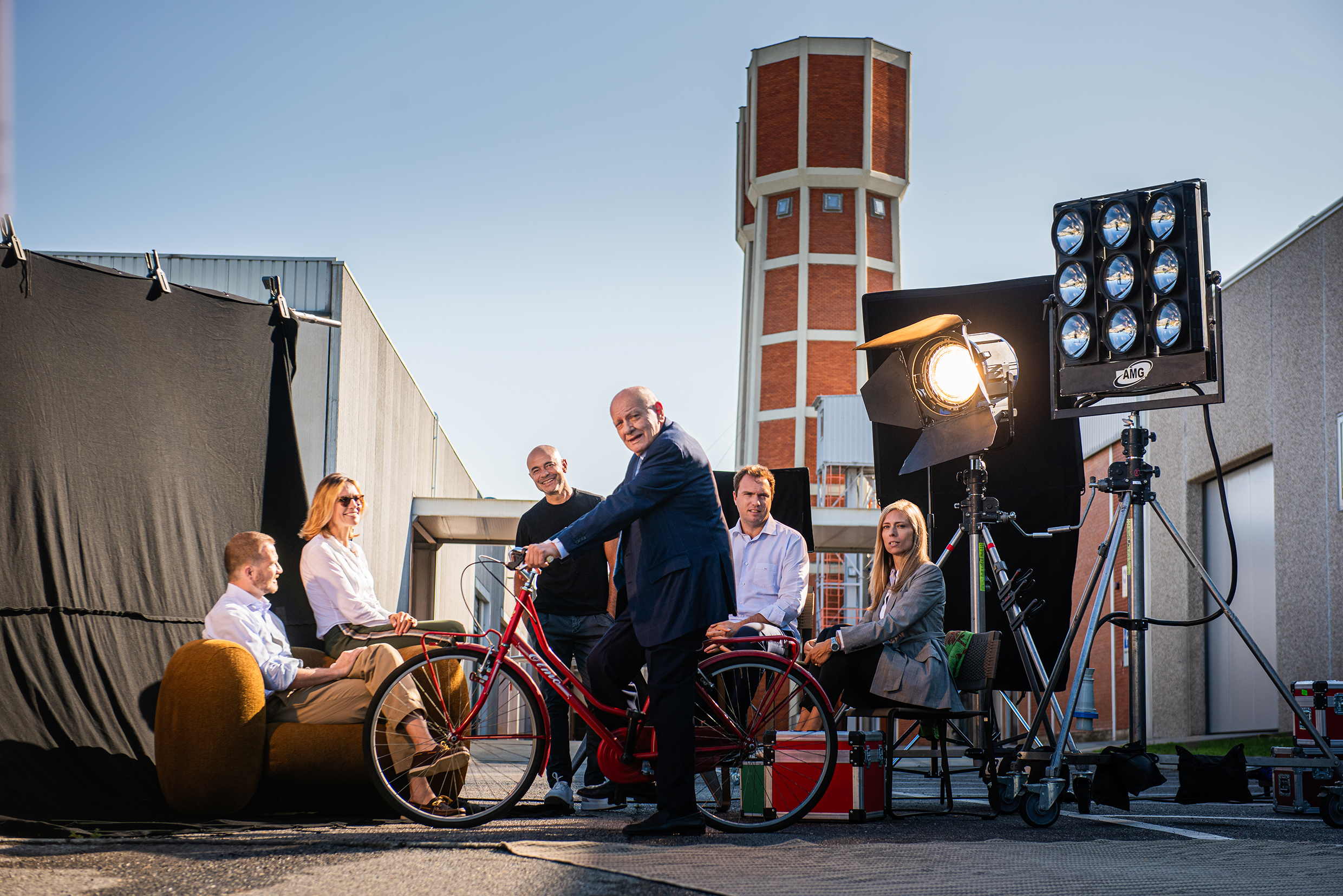 The Molteni family and CEO Marco Piscitelli on set in the Compound, Giussano, Brianza, Italy. Ph. Jeff Burton, from Molteni Mondo by Rizzoli NY, 2024
The Molteni family and CEO Marco Piscitelli on set in the Compound, Giussano, Brianza, Italy. Ph. Jeff Burton, from Molteni Mondo by Rizzoli NY, 2024
Tell me about the decision to put the Molteni family in the role of producers and the designers as protagonists.
I don’t think that is so much a casting choice as a reflection of a reality. For the record, everyone I photographed for this was a star and protagonist in my mind.
Jasper Morrison, the designer of Molteni’s Tea Chair (2021), once said: “Design in objects should be sensed rather than seen.” Do you think that’s true for photography, too?
I like the sensate and emotional ideas that the Jasper Morrison quote makes me think about. I’d say balance can be an artistic act. Don’t overthink it. Mind and body. “Don’t try too hard” comes to mind.
 Jasper Morrison. Ph. Jeff Burton, from Molteni Mondo by Rizzoli NY, 2024
Jasper Morrison. Ph. Jeff Burton, from Molteni Mondo by Rizzoli NY, 2024
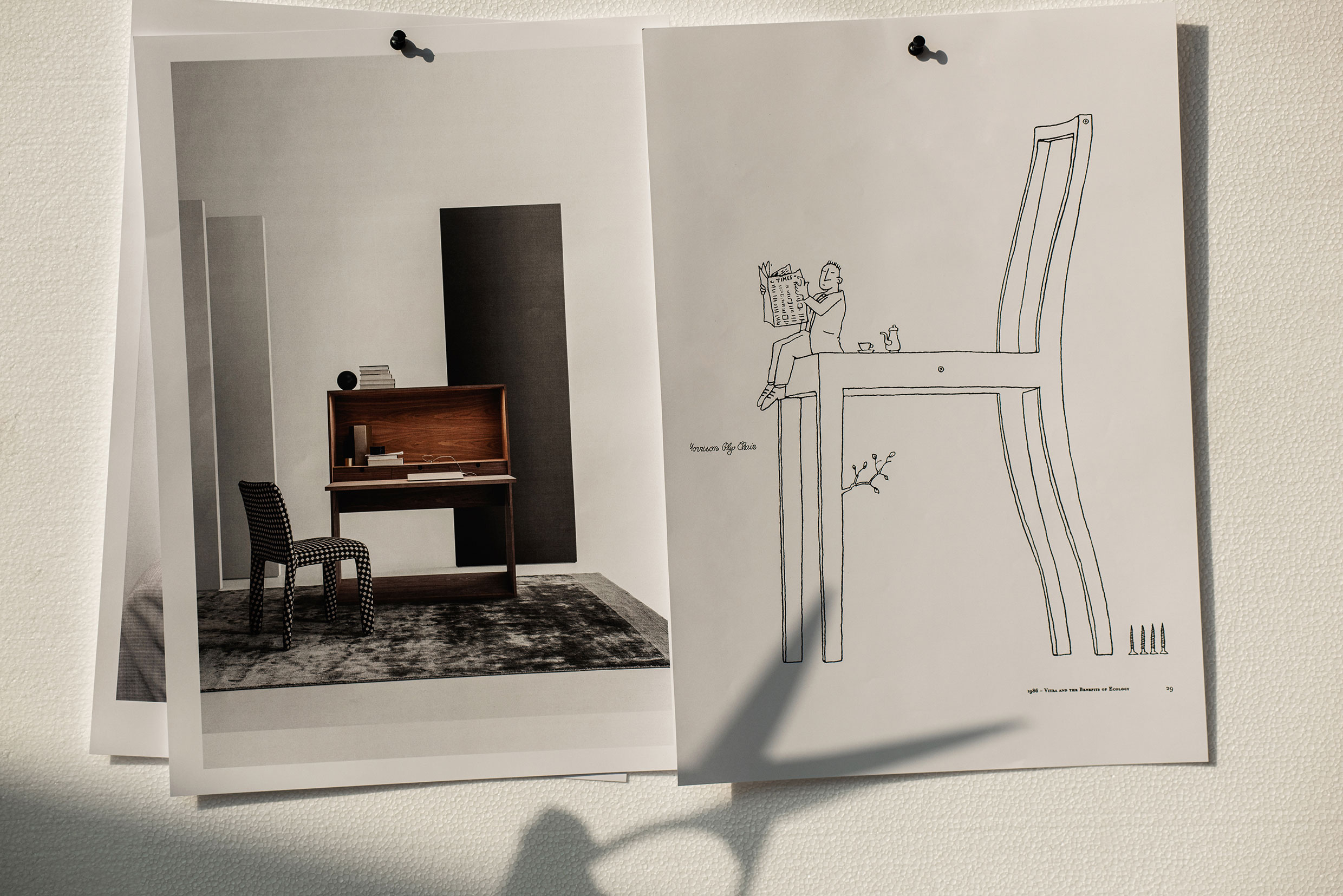 Patricia Urquiola's Glove-up chair (2016), with a Molteni&C Ink writting desk (2016), by Jasper Morrison. Ph. Jeff Burton, from Molteni Mondo by Rizzoli NY, 2024
Patricia Urquiola's Glove-up chair (2016), with a Molteni&C Ink writting desk (2016), by Jasper Morrison. Ph. Jeff Burton, from Molteni Mondo by Rizzoli NY, 2024
There’s a note of surrealism in some images – the scene of George Yabu and Glenn Pushelberg riding a stack of leather hides, for instance. How did ideas such as this come about?
That was a joyful, crazy, improvisational moment! Beda and I co-directed it based on the subjects’ playfulness and the feeling of the moment. I think that image is more Dada as an art term. There are other images in the book that I think are more surrealist looking.
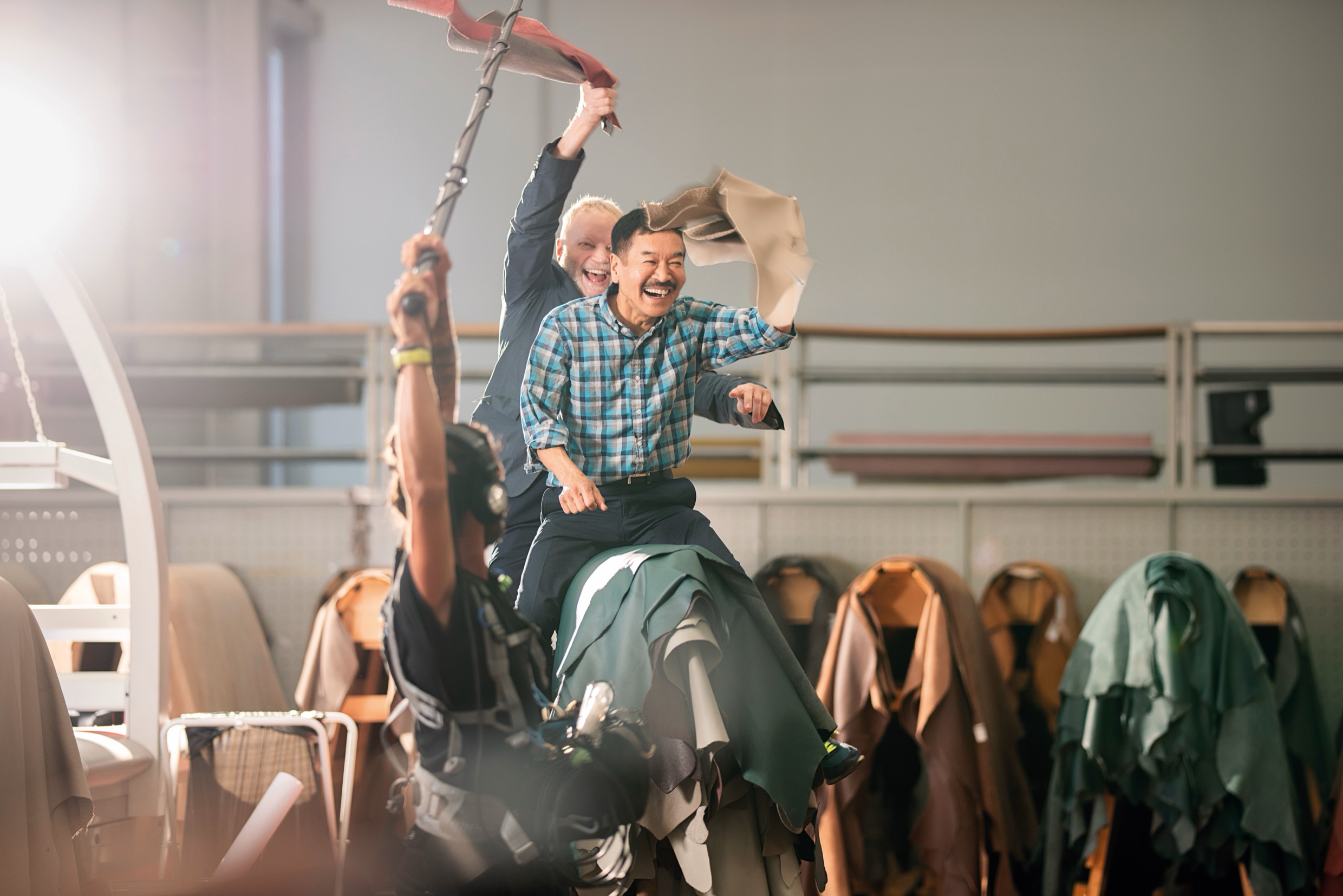
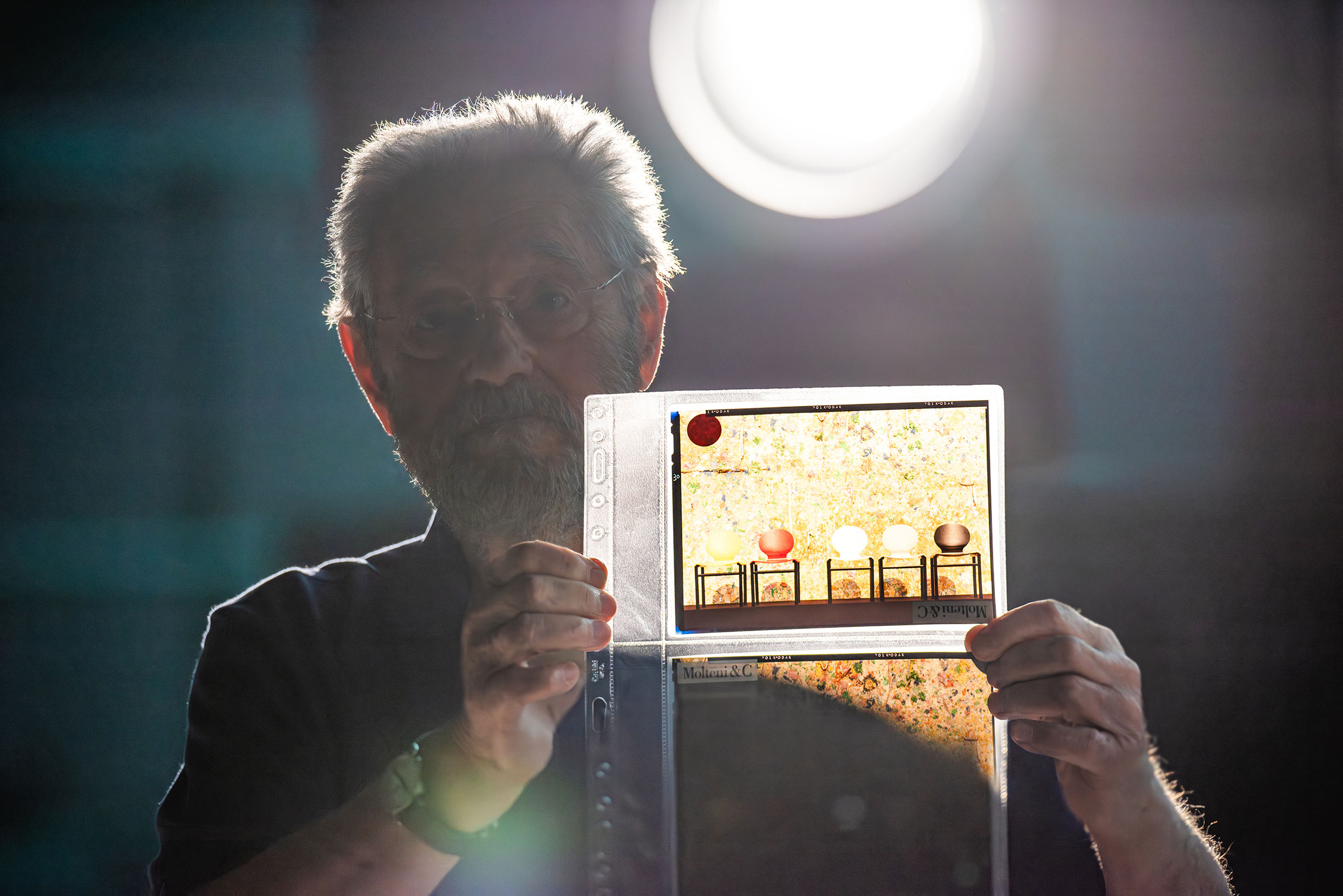 Tobia Scarpa. Ph. Jeff Burton, from Molteni Mondo by Rizzoli NY, 2024
Tobia Scarpa. Ph. Jeff Burton, from Molteni Mondo by Rizzoli NY, 2024
For the section onMolteni&C’s Contract Division, you shot photographs of the photographs documenting the company's historic projects. What were the challenges – and the opportunities – of working with archive material?
The transparencies were the most fun to shoot. It was all interesting to see. Photographing Tobia Scarpa holding his transparency was a treat. Some of my favourite portraits are of him.
After 90 years, naturally, there are a lot of fascinating items in the archives. In addition, I’d love a set of four Monk chairs if anyone is reading.
 Monk Armchair by Tobia Scarpa. Ph. Jeff Burton, from Molteni Mondo by Rizzoli NY, 2024
Monk Armchair by Tobia Scarpa. Ph. Jeff Burton, from Molteni Mondo by Rizzoli NY, 2024
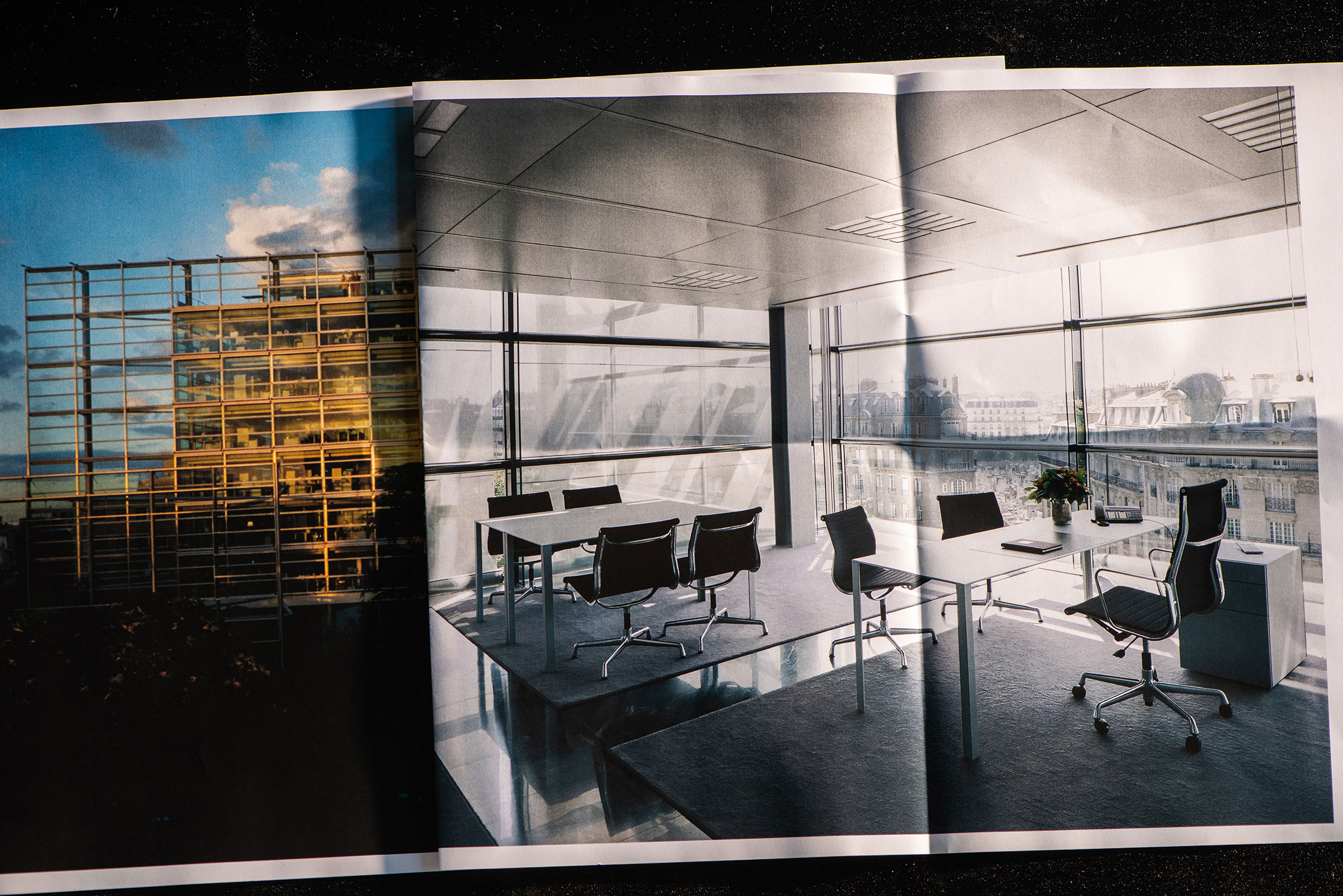
Did anything surprise you during your time at Molteni&C?
The Moltenis’ hands-off approach, their encouragement for me to shoot freely and their confidence in that decision, as well as the trust given to Beda and me as a creative team in general.
You began your career shooting stills on adult film sets, often focusing on unexpected details – reflections, say, or the furniture. In this project, the furniture is still the centre of your attention. What’s the relationship between this earlier period and your style today?
Your using the word surreal when looking at my work is connected to that early work. Seeing things that are already strange and different in an exciting and different way is where things can get very surreal.
My experience in that industry is a much larger discussion than we have space for here. Surrealism was a part of that vision and language that I loved and I don’t want to give up. Working in that industry in the 1990s was amazing. It was still underground, secret and pre-internet. They needed a lot of photographic assets back then.
I had just received my MFA in painting from CalArts when I began shooting. I had put a lot of effort into painting for years beforehand. It was kind of a perfect storm of creativity and stimulation – an incredible playground in which to develop a unique visual vocabulary. I was working a lot and learning a lot about photography and life, to be sure.
Your work often has a sense of secrecy, or hints at a narrative that the viewer is left to guess at. Do you always have a specific story in mind?
You’re touching on a moving target of a subject. Playing with narratives, disrupting things, is a place where some art can happen. Or at least something new can happen. It takes some courage from clients and sometimes some foolishness on my part, seeing how far off-centre we can go beautifully and still make things work.
Main Image: A "Roomscape" imagined by Vincent Van Duysen enhancing the connection betwen indoor and outdoor, with pieces from the Outdoor Collection. Ph. Jeff Burton, from Molteni Mondo. An Italian Design Story by Rizzoli NY, 2024
To celebrate 90 years of Molteni&C, Rizzoli New York has published Molteni Mondo – An Italian Design Story, a book that is on sale worldwide from September 2024.
In the centre of Milan, a short walk from the duomo, is Villa Necchi Campiglio, designed by Piero Portaluppi (1888-1967) for the Necchi Campiglio family between 1932 and 1935.
There are books that collect stories, line them up, find an order, classify and compile lists, trace chronologies and jumps in scale, small revolutions and great changes, from projects to products.
Thanks for your registration.